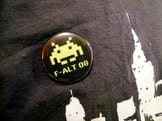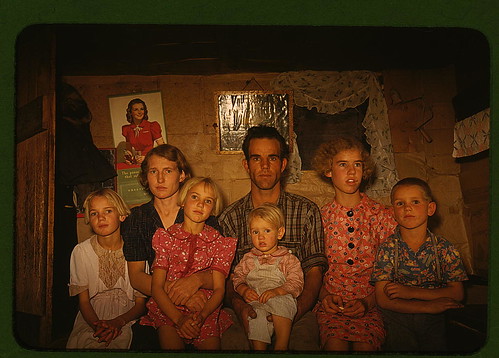Today, I took a different approach to the conference and relaxed. I usually take the approach of trying to attend as many sessions as possible and absorb and report back on as much as I can. However, I’ve found that this approach quickly leaves me exhausted and somewhat removed from the rest of the conference as it allows little time for reflection.
So, my third day in Leeds was a much more enjoyable and stimulating one as I attended sessions, picking up on one or two things that were being presented and following threads and tangents that I found online and from talking with people. One term that I’ve heard mentioned a few times is ‘lifestream’, that is, an aggregation of online activity into a timeline that can be shared with others. You can see my lifestream by going to this page. You’ll see that following a conversation I had at F-ALT08, I looked again at OpenID and setup my own personal website as an OpenID server, learning a great deal at the same time.
You can also see that I joined identi.ca, an open source microblogging site like Twitter, and found details on setting up Laconica, the software behind identi.ca, on my own server and potentially, the Learning Lab. My experience using Twitter at the conference has really demonstrated the value of microblogging within a defined community as a way of rapidly communicating one-to-many messages and engaging in large asynchronous conversations.
In the morning Digital Divide Slam session, we formed small groups and with two people I’d met previously at the fringe events, created a ‘performance’ that reflected on a form of digital divide. We chose ‘gender’, and produced this (prize winning) video which is now on YouTube.
During the second keynote, I drifted off and began to think about e-portfolios and aggregating our online social activity into a profile/portfolio that is controlled by the individual and is dynamically updated. I’d heard about the Attention Profiling Markup Language (APML), and spent time considering whether this could be used or adapted for aggregating a portfolio of work and experience. APML is primarily aimed at individuals’ relationship with advertisers and at a later F-ALT session was able to discuss the suitability of APML or an APML-like standard for aggregating a portfolio of work. Consequently, I’m developing an interest in this area and in other online relationships that can be made between people (see this link, too) and the data that we generate through purposeful and serendipitous online activity.
Having listened to quite a lot of discussion about web2.0 applications over the last few days, I’m even more pleased with the decision to use WordPress as a platform for blogging, web publishing and collaboration in the Learning Lab. With WordPress, we’re able to evaluate many of the latest social web technologies and standards through their plugin system. This flexible plugin and theming system has led to the development of an entire social networking platform based on WordPress, called BuddyPress, and because it’s basically WordPress with some specific plugins and clever use of a theme, it can use any of the available WordPress plugins to connect to Facebook, Twitter, YouTube, Flickr and other popular web 2 services. I’m looking forward to watching BuddyPress develop.
In the evening, we attended the conference dinner at Headingley Cricket Club. It was a great location, with good food and excellent service and while sitting next to one of my digital slam partners, he showed me JoikuSpot, an application that turns a mobile phone into a wifi router. There on our dinner table, he ran Joiku on a 3G Nokia phone and provided wifi access to his iPod Touch. What a great way to share high speed network access among friends, while meeting at a cafe or park to discuss work or study.
I was impressed. The Learning Landscape had extended to the cricket ground.



